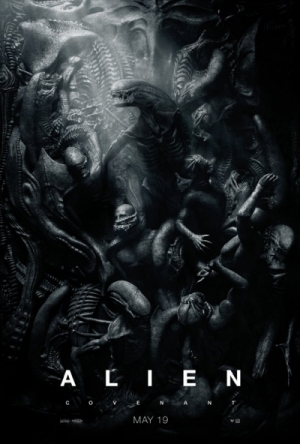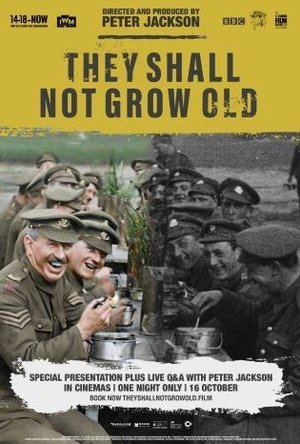Search

ColRegs: Nav Lights & Shapes for Boating and Sailing
Education and Navigation
App
Quick learning & revision tool, over 100 graphics, for all seafarers - this sailing, boating &...

Embark: User friendly personalised nautical charts
Navigation and Travel
App
Embark gives you FREE and updated charts, crafted on data from the Hydrographic Offices. A smooth...
Bob Mann (459 KP) rated Alien: Covenant (2017) in Movies
Sep 29, 2021
Horrific Beasts and How to Avoid Them.
I seem to be in a bit of a minority in quite liking Ridley Scott’s last Alien outing – 2012’s “Prometheus”: a heady, if at times ponderous, theory to the origins of man. The first hour of that film is really good. But for me, what made the original 1979 film so enthralling was the life cycle of the ‘traditional’ Xenomorph aliens through egg to evil hatchling to vicious killing machine. This somewhat got lost with “Prometheus” with a range of alien-like-things ranging from wiggly black goo to something more familiar… and frankly I was confused. Some – repeat, some – of the explanation for that diversity of forms in “Prometheus” is made clearer in the sequel “Alien: Covenant”.
“Covenant” (named again after the spaceship at its heart) is a follow-on sequel to “Prometheus”, so it is worth re-watching it if you can before a cinema trip. At the end of that film we saw Elizabeth Shaw (Noomi Rapace, “The Girl with the Dragon Tattoo”) and a reconstructed android David (Michael Fassbender, “Steve Jobs“) flying off in an alien craft still loaded with its cargo of nasty alien black goo. Shaw had a mission to seek out The Engineer’s home world – named “Paradise” – to find out why after creating man they were intent on going back to finish them off with a WMD. A neat prologue has been released which documents this… here:
We pick up the action 10 years later in a totally improbable 2104. (Give us a break writing team! [Story by Jack Paglen and Michael Green; screenplay by John Logan and Dante Harper]. We know they won’t have got through planning permission on the third Heathrow runway by then, let alone invented interplanetary travel…! 2504, maybe!)
Daniels (Katherine Waterston, “Fantastic Beasts And Where To Find Them“) has just suffered a sudden bereavement (an uncredited James Franco – – blink and you’ll miss him). She has also been rudely awakened from hypersleep due to a sudden system mishap: no, not to find Chris Pratt there like “Passengers“, but by the ship’s android Walter (also Michael Fassbender) who’s also revived the rest of the crew. While effecting repairs they receive a garbled John Denver track mysteriously beamed to them from an earth-like planet not too far away. As this might be a suitable homestead, and as spending weeks more in hypersleep is unattractive, Captain Oram (Billy Crudup, “Spotlight“) votes to check it out, against Daniels’ strong objections. Needless to say, this proves to be a BIG MISTAKE as the new film neatly links hands with the first film.
Kick-ass… Katherine Waterston being careful not to slip in the shower.
There’s a limit to what more I can say about the film without delivering spoilers (so I have added a few more comments in the spoiler section BELOW the trailer). It’s a far more action-oriented film than “Prometheus” and has enough jump scares and gore to please most Alien fans. (In fact, it’s a surprise to me that it got a UK “15” certificate rather than an “18”: how much more violence do you need to show in the film?) A shower scene towards the end of the film is particularly effective and will likely put an end to relaxing shower sex for many people for good!
It also looks visually stunning (cinematography is by Dariusz Wolski (“The Martian“, “Pirates of the Caribbean”) with location shooting in Milford Sound in New Zealand. The special effects are also a cut-above the normal CGI with a devastated Pompeii-like city, a picture of blacks and greys, being particularly effective.
In the acting stakes it is really all down to Waterston and Fassbinder. I wasn’t a great fan of Waterston in “Fantastic Beasts” – a bit insipid I thought – but here she adopts Ripley’s kick-ass mantle with ease but blends it beautifully with doe-eyed vulnerability. Some of her scenes reminded me strongly of Demi Moore in “Ghost”. Fassbinder is fascinating to watch with his dual roles of Walter and David, both slightly different versions of the same being. And the special effects around the Fassbinder-on-Fassbinder action, tending somewhat towards the homoerotic in places, are well done.
Unfortunately the rest of the crew get little in the way of background development, which limits the impact of the inevitable demises. They are also about as clinically stupid as the spaceship crew in “Life” in some of their actions; I guess you could put some of this down to the effects of panic, but in other cases you might see it as a simple cleansing of the gene pool in Darwinian fashion.
Also making uncredited guest appearances are Guy Pearce as Weyland (in a flashback scene) and Noomi Rapace.
Music is “by” Jed Kurzel, but to be honest he does little than wrap around re-versions of the original Jerry Goldsmith classics: not that this is a bad thing, since those themes are iconic and a joy to hear again on the big screen.
My expectations for this movie were sky-high, as it was hinted as a return to form for the franchise. And in many ways it was, with a “man, Gods and androids” theme adding depth to the traditional anatomical-bursting gore. But to be honest, some of the storytelling was highly predictable, and I left slightly disappointed with the overall effort. If my expectations were an 11/10, my reality was more like a 7/10. It’s still a good film, and I look forward to watching it again. But perhaps this is a franchise that has really run its course now for Mr Scott and he should look to his next “Martian”-type movie for a more novel foundation to build his next movie “log cabin on the lake” on.
“Covenant” (named again after the spaceship at its heart) is a follow-on sequel to “Prometheus”, so it is worth re-watching it if you can before a cinema trip. At the end of that film we saw Elizabeth Shaw (Noomi Rapace, “The Girl with the Dragon Tattoo”) and a reconstructed android David (Michael Fassbender, “Steve Jobs“) flying off in an alien craft still loaded with its cargo of nasty alien black goo. Shaw had a mission to seek out The Engineer’s home world – named “Paradise” – to find out why after creating man they were intent on going back to finish them off with a WMD. A neat prologue has been released which documents this… here:
We pick up the action 10 years later in a totally improbable 2104. (Give us a break writing team! [Story by Jack Paglen and Michael Green; screenplay by John Logan and Dante Harper]. We know they won’t have got through planning permission on the third Heathrow runway by then, let alone invented interplanetary travel…! 2504, maybe!)
Daniels (Katherine Waterston, “Fantastic Beasts And Where To Find Them“) has just suffered a sudden bereavement (an uncredited James Franco – – blink and you’ll miss him). She has also been rudely awakened from hypersleep due to a sudden system mishap: no, not to find Chris Pratt there like “Passengers“, but by the ship’s android Walter (also Michael Fassbender) who’s also revived the rest of the crew. While effecting repairs they receive a garbled John Denver track mysteriously beamed to them from an earth-like planet not too far away. As this might be a suitable homestead, and as spending weeks more in hypersleep is unattractive, Captain Oram (Billy Crudup, “Spotlight“) votes to check it out, against Daniels’ strong objections. Needless to say, this proves to be a BIG MISTAKE as the new film neatly links hands with the first film.
Kick-ass… Katherine Waterston being careful not to slip in the shower.
There’s a limit to what more I can say about the film without delivering spoilers (so I have added a few more comments in the spoiler section BELOW the trailer). It’s a far more action-oriented film than “Prometheus” and has enough jump scares and gore to please most Alien fans. (In fact, it’s a surprise to me that it got a UK “15” certificate rather than an “18”: how much more violence do you need to show in the film?) A shower scene towards the end of the film is particularly effective and will likely put an end to relaxing shower sex for many people for good!
It also looks visually stunning (cinematography is by Dariusz Wolski (“The Martian“, “Pirates of the Caribbean”) with location shooting in Milford Sound in New Zealand. The special effects are also a cut-above the normal CGI with a devastated Pompeii-like city, a picture of blacks and greys, being particularly effective.
In the acting stakes it is really all down to Waterston and Fassbinder. I wasn’t a great fan of Waterston in “Fantastic Beasts” – a bit insipid I thought – but here she adopts Ripley’s kick-ass mantle with ease but blends it beautifully with doe-eyed vulnerability. Some of her scenes reminded me strongly of Demi Moore in “Ghost”. Fassbinder is fascinating to watch with his dual roles of Walter and David, both slightly different versions of the same being. And the special effects around the Fassbinder-on-Fassbinder action, tending somewhat towards the homoerotic in places, are well done.
Unfortunately the rest of the crew get little in the way of background development, which limits the impact of the inevitable demises. They are also about as clinically stupid as the spaceship crew in “Life” in some of their actions; I guess you could put some of this down to the effects of panic, but in other cases you might see it as a simple cleansing of the gene pool in Darwinian fashion.
Also making uncredited guest appearances are Guy Pearce as Weyland (in a flashback scene) and Noomi Rapace.
Music is “by” Jed Kurzel, but to be honest he does little than wrap around re-versions of the original Jerry Goldsmith classics: not that this is a bad thing, since those themes are iconic and a joy to hear again on the big screen.
My expectations for this movie were sky-high, as it was hinted as a return to form for the franchise. And in many ways it was, with a “man, Gods and androids” theme adding depth to the traditional anatomical-bursting gore. But to be honest, some of the storytelling was highly predictable, and I left slightly disappointed with the overall effort. If my expectations were an 11/10, my reality was more like a 7/10. It’s still a good film, and I look forward to watching it again. But perhaps this is a franchise that has really run its course now for Mr Scott and he should look to his next “Martian”-type movie for a more novel foundation to build his next movie “log cabin on the lake” on.
Bob Mann (459 KP) rated They Shall Not Grow Old (2018) in Movies
Sep 28, 2021
We DO remember them.
“Trapped in a Charlie Chaplin World”. So says director Peter Jackson in a post-screening discussion with Mark Kermode, describing early black and white documentary footage. Whereas modern film runs at 24 fps, most of the old footage is hand cranked, with speeds as low as 12 fps which leads to its jerky nature. Jackson in this project with the Imperial War Museum took their WW1 footage and put it through a ‘pipeline process. This cleaned-up and restored the original footage; used clever computer interpolation to add in the missing 6 to 12 frames per second; and then colourised it.
The results are outstanding. Jackson wisely focuses the film on the specific slice of WW1 action from the trenches. And those anonymous figures become real, live, breathing humans on screen. It is obviously tragic that some (and as commented by Jackson, many in one scene) are not to be breathing humans for much longer.
These effects take a while to kick in. The early scenes in the documentary are in the original black and white, describing the recruitment process, and how many of the recruits were under-age. (To explain the varied comments in the film, they should have been 18, although officially shouldn’t have been sent overseas until 19).
It is when the troops arrive in France that we suddenly go from black-and-white to the fully restored and colourised footage, and it is a gasp-inducing moment.
Audio magic
All of the audio commentary is from original BBC recordings of war veterans recounting their actual experiences in the trench. Some sound like heroes; some sound like rogues; all came out changed men. Supporting music of WW1 ditties, including the incredibly rude “Mademoiselle from Armentières” over the end credits, is provided by Plan 9.
But equally impressive is the dubbing of the characters onscreen. Jackson employed forensic lip-readers to determine what the soldiers on-screen were saying, and reproduced the speech using appropriate regional accents for the regiments concerned. Jackson also recounts how the words associated with a “pep-talk” speech to troops by an officer he found on an original slip of paper within the regimental records: outstanding. Added sound effects include real-life shelling by the New Zealand army. It all adds to the overall atmosphere of the film.
3D = less
The film itself is a masterpiece of technical innovation that will change in the future the way in which we should be able to see this sort of early film footage forever. As a documentary it’s near-perfection. But if I have a criticism of the cinema showing I attended it is that the 3D tended to detract rather than add to the film. Perhaps this is just my eyesight, but 3D always tends to make images slightly more blurry. Where (like “Gravity”) there are great 3D effects to showcase, it’s worth the slight negative to get the massive positive. But here, there was no such benefit: 2D would have been better. For those in the UK (and possibly through other broadcasters worldwide) the film is being shown on BBC2 tonight (11/11/18) at 9:30: I will be watching it again to compare and contrast.
Final Thoughts
Jackson dedicated the film to his grandfather. And almost all of us Brits will have relatives affected by this “war to end all wars”. In my case, my grandfather was shot and severely wounded at Leuze Wood on the Somme, lying in the mud for four days and four nights before being recovered… by the Germans! Fortunately he was well-treated and, although dying young, recovered enough to father my father – else I wouldn’t be here today writing this. On this Rememberance Sunday, 100 years on, it is a time for us to truly remember the sacrifice these men and boys gave to what, all in the film agree, was a pretty obstinate and pointless conflict.
I’ll finish the review by reproducing one of the war poems of my wife’s Uncle Ivor (available in a collection here), written on 11/11/18 a hundred years ago:
Peace
At last O Lord the Day has come,
And hushed is now the noise of guns.
Peace is proclaimed over land and sea,
Our heartfelt thanks we give to Thee.
I thank thee Father for Thy care,
That thou hasn’t answered all my prayers.
This day I see in manhood’s strength,
The Peace we longed for, come at length.
O may my future actions be,
Worthy of all Thy care to me.
Let me forget not Thy Great Love,
Remembering chums who live Above.
I.G.H. 11/11/1918, France.
The results are outstanding. Jackson wisely focuses the film on the specific slice of WW1 action from the trenches. And those anonymous figures become real, live, breathing humans on screen. It is obviously tragic that some (and as commented by Jackson, many in one scene) are not to be breathing humans for much longer.
These effects take a while to kick in. The early scenes in the documentary are in the original black and white, describing the recruitment process, and how many of the recruits were under-age. (To explain the varied comments in the film, they should have been 18, although officially shouldn’t have been sent overseas until 19).
It is when the troops arrive in France that we suddenly go from black-and-white to the fully restored and colourised footage, and it is a gasp-inducing moment.
Audio magic
All of the audio commentary is from original BBC recordings of war veterans recounting their actual experiences in the trench. Some sound like heroes; some sound like rogues; all came out changed men. Supporting music of WW1 ditties, including the incredibly rude “Mademoiselle from Armentières” over the end credits, is provided by Plan 9.
But equally impressive is the dubbing of the characters onscreen. Jackson employed forensic lip-readers to determine what the soldiers on-screen were saying, and reproduced the speech using appropriate regional accents for the regiments concerned. Jackson also recounts how the words associated with a “pep-talk” speech to troops by an officer he found on an original slip of paper within the regimental records: outstanding. Added sound effects include real-life shelling by the New Zealand army. It all adds to the overall atmosphere of the film.
3D = less
The film itself is a masterpiece of technical innovation that will change in the future the way in which we should be able to see this sort of early film footage forever. As a documentary it’s near-perfection. But if I have a criticism of the cinema showing I attended it is that the 3D tended to detract rather than add to the film. Perhaps this is just my eyesight, but 3D always tends to make images slightly more blurry. Where (like “Gravity”) there are great 3D effects to showcase, it’s worth the slight negative to get the massive positive. But here, there was no such benefit: 2D would have been better. For those in the UK (and possibly through other broadcasters worldwide) the film is being shown on BBC2 tonight (11/11/18) at 9:30: I will be watching it again to compare and contrast.
Final Thoughts
Jackson dedicated the film to his grandfather. And almost all of us Brits will have relatives affected by this “war to end all wars”. In my case, my grandfather was shot and severely wounded at Leuze Wood on the Somme, lying in the mud for four days and four nights before being recovered… by the Germans! Fortunately he was well-treated and, although dying young, recovered enough to father my father – else I wouldn’t be here today writing this. On this Rememberance Sunday, 100 years on, it is a time for us to truly remember the sacrifice these men and boys gave to what, all in the film agree, was a pretty obstinate and pointless conflict.
I’ll finish the review by reproducing one of the war poems of my wife’s Uncle Ivor (available in a collection here), written on 11/11/18 a hundred years ago:
Peace
At last O Lord the Day has come,
And hushed is now the noise of guns.
Peace is proclaimed over land and sea,
Our heartfelt thanks we give to Thee.
I thank thee Father for Thy care,
That thou hasn’t answered all my prayers.
This day I see in manhood’s strength,
The Peace we longed for, come at length.
O may my future actions be,
Worthy of all Thy care to me.
Let me forget not Thy Great Love,
Remembering chums who live Above.
I.G.H. 11/11/1918, France.

